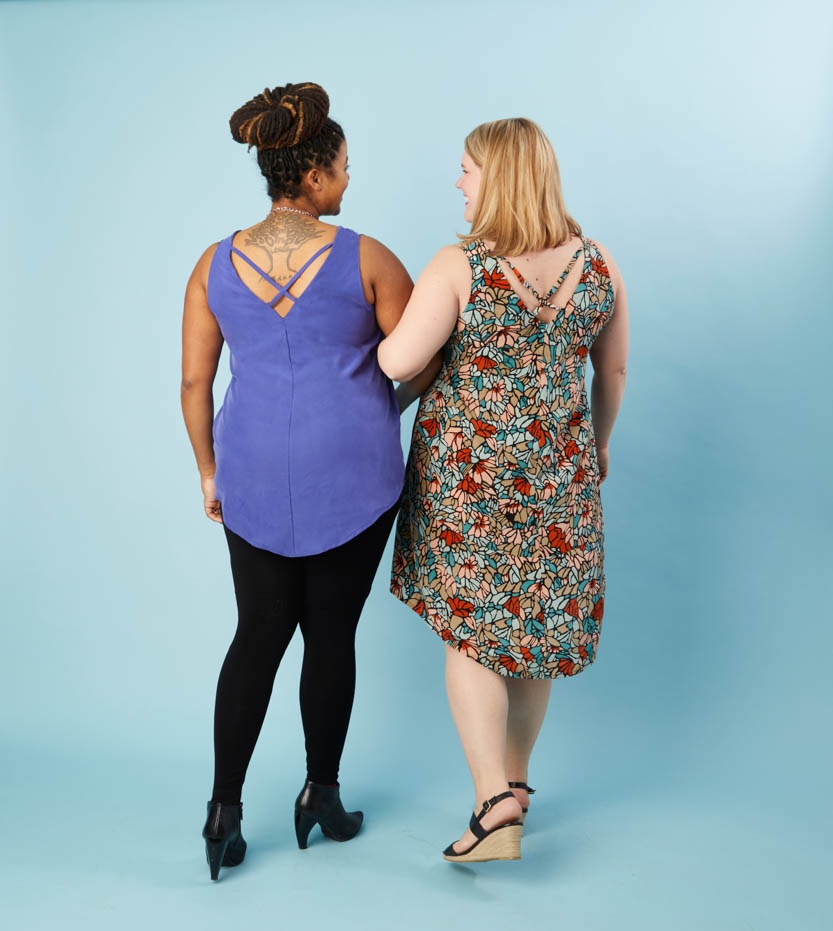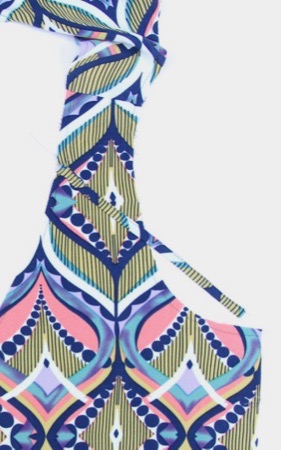
Hi everyone! Carrie here again to get us started on our Webster Top & Dress sewalong! The Webster is such a versatile summer sewing pattern (or layering piece for our friends in the Southern Hemisphere) and we can’t wait to see what you create!
Choosing your size
The first step in our sewalong is choosing your size in the Webster Top & Dress. There are two measurement charts: one is the Body Measurement chart, and the other is the Finished Garment chart. The Body Measurement chart helps you choose your size based on what numbers you get when you measure your body with a tape measure – it has numbers for your bust (around the fullest part), waist and hip. The Finished Garment chart shows you the size of the actual sewn garment – the difference between that and the Body Measurement chart is called “ease”, and it’s the amount of extra room in the garment that the designer recommends for the clothes to fit well and allow movement.
Generally, you want to start by comparing your measurement with the body measurement chart. However, sometimes you might find that it looks like you’ll need to grade between sizes based on your measurements. When this is the case, taking a look at the finished garment measurement chart can help you decide when grading is actually necessary. For the Webster, the positive ease will make it so the need to grade is less likely; see below for more detail on that.

As with all Cashmerette Patterns, the best bet is to start with your bust measurement – you should use your full bust measurement, which is around the fullest part of your bust. Because of the cup sizing, you may find you could fit in two different bust sizes – in which case, you want to pick the overall size that’s closest to your waist size. So for instance, if your bust is 44″, you could theoretically be a 14 G/H or a 16 C/D. Which one should you pick? Take a look at the waist measurement – if yours is closer to 34″ (size 14), then go with the 14 G/H. If yours is closer to 36″ (size 16), then go with the 16 C/D. Because the Webster Top & Dress is meant to fit more closely through the bust and then flow below that, the bust measurement is the most important here. Also think about the overall size and shape of your frame. Do you have smaller shoulders compared to a larger bust? Then maybe in the above example, even if your waist is 36″ you should try the 14 G/H. Fitting is a bit of art combined with science!
Don’t fret if the cup size doesn’t match up with your bra size – there is so much variation in bra sizing that it’s not possible to perfectly line them up. Use your bust measurement and you’ll be fine.
Grading Between Sizes
The Webster Top & Dress has a significant amount of positive ease in the waist and hips as it is designed to be a floaty, flowy fitting garment. If you want to grade between sizes or make a more fitted garment, check out this post where Jenny details how to adjust the Webster!

Preparing pattern and fabric
Now that we’ve chosen our size and graded if necessary, it’s time to prepare our pattern and fabric so that we’ll be all ready to sew next time! Are you using silk or a slippery fabric and feeling a little intimidated? Check out our Tips and Tricks for Sewing with Silk!
Here’s your checklist:
- Wash and dry your fabric, to make sure it’s pre-shrunk and you’re not going to get any nasty surprises later!
- Press your fabric so it’s nice and flat. Check to see if you get any iron shine when you press the right side. If so, you’ll want to use a press cloth when pressing between steps.
- If you’re using a printed pattern, either cut or trace off your pattern pieces – if you’re making adjustments or are going to make any dresses in other sizes in the future, I definitely recommend tracing.
- If you’re using a PDF pattern, you’ll need to print and assemble it. Here are some pointers to help you.
- Transfer all the markings to the fabric. For the notches, make a little snip into the fabric, within the seam allowance (so no more than 1/4″/6mm).
- Cut all pieces, following the layout diagrams in the pattern.
For the next step in our Webster Top & Dress Sewalong, we’ll get started interfacing, stay stitching, and sewing our darts. Share your progress with us using #WebsterTop or #WebsterDress!





I’m so excited to make this dress! I bought the fabric yesterday (a nice lightweight cotton), but I’m worried it might be a little see through when it’s on, even though the fabric is opaque. Is there a way to add a lining to the dress? I’ve never done that before.
Thank you,
Laurie
I just finished mine yesterday, threw it on and went out to dinner- so awesome